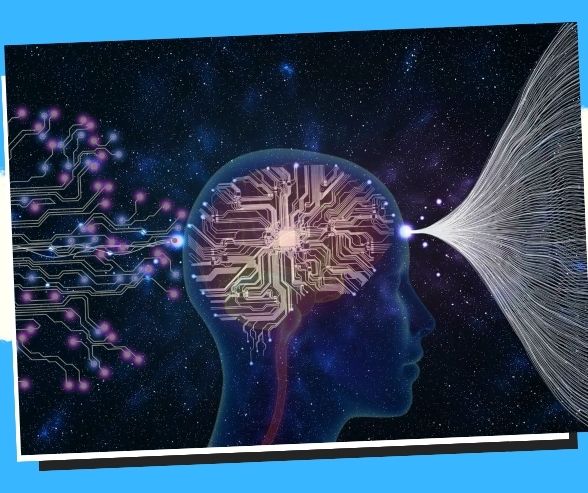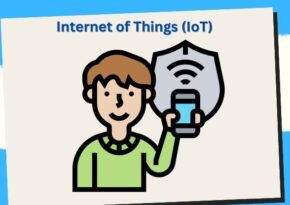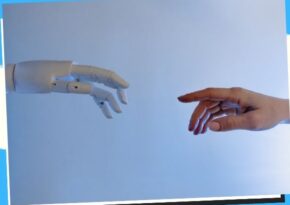
Exploring RPA and AI: Understanding the Differences and Benefits
Stay ahead of the curve by mastering the intricacies of RPA and AI synergy, positioning your business for success in the digital age.
Unveiling the Synergies and Differences Between RPA and Artificial Intelligence
In the realm of digital transformation, two powerful technologies stand out: Robotic Process Automation (RPA) and Artificial Intelligence (AI). While both are driving forces behind automation, they possess distinct characteristics and functionalities. Understanding the synergies and differences between RPA and AI is crucial for organizations seeking to leverage automation effectively. In this comprehensive guide, we’ll delve into the intricacies of RPA and AI, exploring their synergies, differences, and practical applications. Let’s unravel the dynamic duo of automation and unlock new possibilities for innovation! 🤖🧠
1. Demystifying Robotic Process Automation (RPA)
a. Definition: RPA refers to the use of software robots or bots to automate repetitive, rule-based tasks typically performed by humans. These bots mimic human actions by interacting with digital systems, applications, and data to execute tasks efficiently and accurately.
b. Key Characteristics: RPA is characterized by its ability to automate structured, deterministic processes without the need for complex programming or changes to underlying systems. It focuses on tasks with predefined rules and structured data formats, such as data entry, form filling, and report generation.
c. Benefits: RPA offers several benefits, including increased productivity, improved accuracy, reduced operational costs, and enhanced scalability. By automating routine tasks, RPA allows organizations to streamline workflows, free up valuable human resources, and focus on higher-value activities.
2. Understanding Artificial Intelligence (AI)
a. Definition: AI refers to the simulation of human intelligence in machines, enabling them to perform tasks that typically require human cognition, such as learning, reasoning, problem-solving, and decision-making. AI encompasses a broad range of techniques, including machine learning, natural language processing, computer vision, and cognitive computing.
b. Key Characteristics: AI systems possess the ability to learn from data, adapt to new information, and make decisions autonomously without explicit programming. Unlike RPA, which focuses on rule-based automation, AI thrives in environments with unstructured data, uncertainty, and complexity.
c. Benefits: AI unlocks numerous benefits across various industries, including enhanced decision-making, predictive analytics, personalized experiences, and automation of cognitive tasks. By leveraging AI technologies, organizations can gain valuable insights from data, optimize processes, and drive innovation.
3. Synergies Between RPA and Artificial Intelligence
a. Complementary Capabilities: RPA and AI complement each other by combining rule-based automation with cognitive capabilities. While RPA excels at automating repetitive tasks with structured data, AI enhances automation by processing unstructured data, extracting insights, and making intelligent decisions.
b. Integrated Solutions: Integrating RPA with AI technologies such as machine learning, natural language processing, and computer vision enables advanced automation scenarios. For example, RPA bots can leverage AI algorithms to analyze documents, extract information, and make context-aware decisions.
c. Enhanced Efficiency and Accuracy: By harnessing the synergies between RPA and AI, organizations can achieve greater efficiency, accuracy, and scalability in their automation initiatives. AI-powered RPA solutions automate complex processes end-to-end, handle exceptions intelligently, and adapt to dynamic environments.
4. Differences Between RPA and Artificial Intelligence
a. Scope of Automation: RPA focuses on automating repetitive, rule-based tasks with structured data, while AI extends automation to tasks involving unstructured data, cognitive reasoning, and human-like decision-making.
b. Implementation Complexity: RPA implementation is relatively straightforward and requires minimal technical expertise, whereas AI implementation often involves complex algorithms, data science techniques, and specialized skills.
c. Use Cases: RPA is commonly used for back-office operations, transactional processes, and administrative tasks, whereas AI finds applications in areas such as predictive analytics, natural language understanding, image recognition, and virtual assistants.
5. Practical Applications of RPA and Artificial Intelligence
a. Customer Service Automation: RPA can automate routine customer service tasks such as data entry, order processing, and ticket routing, while AI-powered chatbots and virtual assistants provide personalized customer interactions and support.
b. Financial Operations: RPA streamlines financial processes such as invoice processing, accounts payable/receivable, and reconciliations, while AI enhances fraud detection, risk management, and investment decisions through predictive analytics.
c. Healthcare Management: RPA automates administrative tasks like appointment scheduling, claims processing, and patient data entry, while AI enables medical diagnosis, personalized treatment plans, and drug discovery through data analysis and predictive modeling.
d. Supply Chain Optimization: RPA automates inventory management, order processing, and logistics tracking, while AI optimizes demand forecasting, route optimization, and supplier management through predictive analytics and machine learning algorithms.
6. Tips for Leveraging RPA and AI Effectively
a. Identify Use Cases: Start by identifying automation opportunities where RPA or AI can deliver the most value to your organization. Prioritize use cases based on feasibility, impact, and alignment with business goals.
b. Select the Right Technologies: Choose RPA and AI technologies that align with your organization’s needs, requirements, and capabilities. Consider factors such as scalability, ease of integration, vendor support, and long-term viability when evaluating technology solutions.
c. Build Cross-Functional Teams: Foster collaboration between business users, IT professionals, data scientists, and domain experts to drive successful implementation of RPA and AI initiatives. Leverage diverse skill sets and perspectives to ensure holistic automation solutions.
d. Monitor Performance and Iterate: Continuously monitor the performance of RPA and AI solutions, collect feedback from users, and iterate based on insights and lessons learned. Embrace an agile approach to automation to adapt to changing business needs and technological advancements.
7. Future Trends and Innovations
a. Hyperautomation: The convergence of RPA, AI, and other automation technologies will enable hyperautomation, where end-to-end business processes are automated comprehensively. Embrace hyper-automation to achieve greater efficiency, agility, and innovation in your organization.
b. Explainable AI: As AI becomes more pervasive, there will be a growing demand for explainable AI, where the reasoning behind AI decisions is transparent and interpretable. Invest in AI technologies that prioritize transparency, accountability, and ethical considerations.
c. Augmented Intelligence: Augmented intelligence combines human expertise with AI capabilities to enhance decision-making, problem-solving, and creativity. Foster a culture of augmented intelligence where humans and machines collaborate synergistically to achieve superior outcomes.
🤖💡 Benefits of RPA and Artificial Intelligence
- Enhanced Automation: RPA streamlines repetitive tasks, while AI enables intelligent decision-making and cognitive automation, together offering comprehensive automation solutions.
- Improved Accuracy: RPA ensures accuracy in repetitive tasks, while AI algorithms analyze data and make predictions, enhancing decision accuracy and reducing errors.
- Increased Productivity: RPA speeds up task execution, while AI algorithms automate complex processes, resulting in significant productivity gains for organizations.
- Advanced Data Analysis: AI-powered analytics extract insights from large datasets, while RPA assists in data collection and processing, enabling organizations to make data-driven decisions.
- Personalized Customer Experience: AI algorithms analyze customer data to personalize interactions, while RPA ensures seamless execution of customer service tasks, leading to enhanced customer satisfaction.
- Cost Reduction: RPA reduces labor costs by automating repetitive tasks, while AI-driven predictive maintenance and optimization algorithms minimize operational expenses.
- Increased Scalability: RPA bots can be scaled up or down based on demand, while AI models can handle large volumes of data and adapt to changing business requirements.
- Innovation Catalyst: RPA and AI foster innovation by automating mundane tasks and freeing up resources for strategic initiatives, accelerating digital transformation efforts.
- Risk Mitigation: RPA ensures compliance with regulatory requirements, while AI-powered risk assessment algorithms identify potential risks and vulnerabilities, minimizing organizational risk.
- Competitive Advantage: Organizations leveraging RPA and AI gain a competitive edge by improving operational efficiency, enhancing decision-making, and delivering superior customer experiences.
📊🔍 Case Studies
- Financial Sector: Fraud Detection
A leading bank implemented RPA to automate transaction monitoring, while AI algorithms analyzed transaction patterns to detect fraud, resulting in a 50% reduction in fraudulent transactions. - Healthcare Industry: Predictive Maintenance
A hospital integrated RPA to automate equipment maintenance scheduling, while AI algorithms predicted equipment failures based on usage patterns, reducing downtime by 40% and lowering maintenance costs by 30%. - Manufacturing Sector: Supply Chain Optimization
A manufacturing company deployed RPA to automate order processing and inventory management, while AI algorithms optimized supply chain operations, reducing inventory holding costs by 25% and improving delivery times by 30%. - Retail Industry: Personalized Recommendations
A retail chain utilized RPA to automate order fulfillment processes, while AI algorithms analyzed customer purchase history to generate personalized product recommendations, resulting in a 20% increase in sales. - Telecommunications Sector: Network Optimization
A telecommunications provider employed RPA to automate network configuration tasks, while AI algorithms optimized network traffic management, reducing latency by 50% and improving service reliability. - Insurance Industry: Claims Processing
An insurance company integrated RPA to automate claims processing workflows, while AI algorithms assessed claim validity and calculated settlement amounts, reducing claims processing time by 60% and improving customer satisfaction. - Supply Chain Management: Demand Forecasting
A logistics company combined RPA with AI to automate demand forecasting processes, enabling proactive inventory management and reducing stockouts by 40%, resulting in improved customer satisfaction. - Customer Service: Chatbots
An e-commerce platform deployed RPA for order processing, while AI-powered chatbots handled customer inquiries and support, resulting in faster response times and improved customer engagement. - Human Resources: Talent Acquisition
A multinational corporation leveraged RPA to automate resume screening and candidate communication processes, while AI algorithms analyzed candidate profiles to identify top talent, resulting in more efficient recruitment processes and better hiring decisions. - Energy Sector: Predictive Maintenance
An energy company integrated RPA with AI to automate equipment maintenance scheduling, while predictive maintenance algorithms analyzed sensor data to anticipate equipment failures, reducing downtime and maintenance costs.
🔑🚀 Key Takeaways
- Complementary Technologies: RPA and AI are complementary technologies that, when combined, offer comprehensive automation solutions with enhanced cognitive capabilities.
- Strategic Alignment: Align RPA and AI initiatives with business objectives and select use cases that offer the highest ROI and strategic value.
- Data Integration: Ensure seamless integration of RPA and AI systems with existing data sources and IT infrastructure to maximize efficiency and data accuracy.
- Interdisciplinary Collaboration: Foster collaboration between IT, operations, and data science teams to leverage the full potential of RPA and AI technologies.
- Continuous Learning: Invest in employee training and development to build expertise in RPA and AI technologies and stay abreast of industry advancements and best practices.
- Ethical Considerations: Consider ethical implications such as data privacy, algorithm bias, and job displacement when deploying RPA and AI solutions, and implement responsible AI governance frameworks.
- Change Management: Implement effective change management strategies to address employee concerns, provide training, and foster a culture of innovation and collaboration.
- Scalability and Flexibility: Design RPA and AI solutions with scalability and flexibility in mind, allowing for easy adaptation to changing business requirements and technological advancements.
- Performance Monitoring: Regularly monitor the performance of RPA and AI systems, gather feedback, and iterate on automation workflows to optimize performance and address evolving needs.
- Strategic Partnerships: Consider partnering with technology vendors and consulting firms with expertise in both RPA and AI to accelerate implementation and maximize ROI.
❓🔍 FAQs (Frequently Asked Questions)
- What is the difference between RPA and AI?
RPA focuses on automating repetitive tasks, while AI enables machines to learn from data, make decisions, and perform cognitive tasks. - How do RPA and AI work together?
RPA automates routine tasks, while AI algorithms analyze data, make predictions, and provide insights, enhancing the capabilities of automation systems. - What industries can benefit from RPA and AI synergies?
Industries such as finance, healthcare, manufacturing, retail, telecommunications, and logistics can benefit from the combined power of RPA and AI. - What are some common use cases for RPA and AI integration?
Common use cases include fraud detection, predictive maintenance, personalized recommendations, supply chain optimization, and customer service automation. - Do RPA and AI replace human jobs?
RPA and AI augment human capabilities by automating repetitive tasks and enhancing decision-making, leading to job transformation rather than job displacement. - How can organizations measure the ROI of RPA and AI initiatives?
ROI metrics may include cost savings, productivity gains, revenue growth, error reduction, and improvements in customer satisfaction and operational efficiency. - **What are the key considerations for selecting RPA and AI vendors?**
Key considerations include scalability, integration capabilities, security features, support services, and the vendor’s track record of successful implementations. - What are some ethical considerations when deploying RPA and AI solutions?
Ethical considerations include data privacy, algorithm bias, transparency, accountability, and the impact on employment and society. - How can organizations address security concerns when implementing RPA and AI?
Organizations should implement robust security measures, including data encryption, access controls, threat detection, and regular security audits, to protect sensitive information and mitigate cybersecurity risks. - What are the future trends in RPA and AI integration?
Future trends include advancements in natural language processing, computer vision, and reinforcement learning, as well as greater emphasis on explainable AI and responsible automation practices.
Conclusion: Embrace the Power of Automation
RPA and AI represent two sides of the same coin, each offering unique capabilities and value propositions in the realm of automation. By understanding their synergies, differences, and practical applications, organizations can unlock new levels of productivity, efficiency, and innovation. Embrace the power of automation by leveraging RPA and AI technologies strategically, building cross-functional teams, and staying abreast of emerging trends and innovations. Let’s embark on this journey of digital transformation together and shape a future where humans and machines collaborate seamlessly to drive positive change! 🌐🚀
Key Phrases
- RPA and AI synergy
- RPA vs. AI differences
- Automation and intelligence integration
- RPA AI collaboration
- Cognitive automation
- Intelligent workflows
- RPA AI integration benefits
- Automation technology comparison
- Cognitive decision-making processes
- Synergistic automation solutions
Best Hashtags
- #RPAandAI
- #AutomationSynergy
- #AIIntegration
- #CognitiveAutomation
- #IntelligentWorkflows
- #DigitalTransformation
- #RPAvsAI
- #TechSynergy
- #FutureOfWork
- #Innovation
Save/Share this story with QR CODE
Disclaimer
This article is for informational purposes only and does not constitute endorsement of any specific technologies or methodologies and financial advice or endorsement of any specific products or services.
📩 Need to get in touch?
📩 Feel free to Contact NextGenDay.com for comments, suggestions, reviews, or anything else.
We appreciate your reading. 😊Simple Ways To Say Thanks & Support Us:
1.) ❤️GIVE A TIP. Send a small donation thru Paypal😊❤️
Your DONATION will be used to fund and maintain NEXTGENDAY.com
Subscribers in the Philippines can make donations to mobile number 0917 906 3081, thru GCash.
3.) 🛒 BUY or SIGN UP to our AFFILIATE PARTNERS.
4.) 👍 Give this news article a THUMBS UP, and Leave a Comment (at Least Five Words).
AFFILIATE PARTNERS

World Class Nutritional Supplements - Buy Highest Quality Products, Purest Most Healthy Ingredients, Direct to your Door! Up to 90% OFF.
Join LiveGood Today - A company created to satisfy the world's most demanding leaders and entrepreneurs, with the best compensation plan today.



 Business Technology, Finance Technology & Information Technology
Business Technology, Finance Technology & Information Technology





